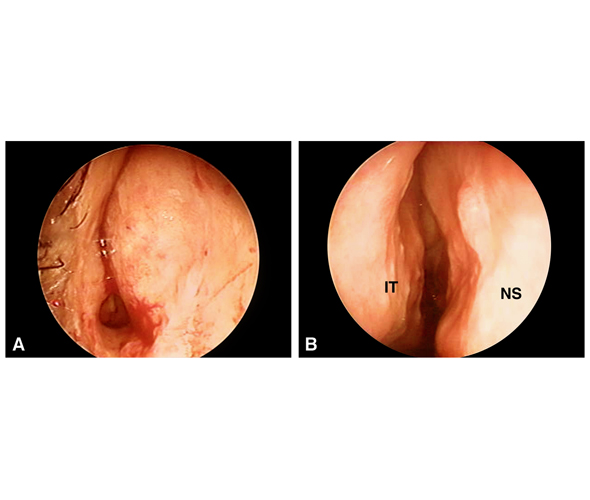1.
Discuss the anatomy of the septum. What is the L-strut and why is it import during a septoplasty?
2.
Discuss the surgical indications and techniques for the management of nasal obstruction secondary to inferior turbinate hypertrophy.
3.
What are the potential complications of the surgical procedures used to treat nasal obstruction due to inferior turbinate hypertrophy?
4.
A patient who is post-operative day 1 from septoplasty complains of severe pain. What is your suspected diagnosis and how would you treat it?
5.
What are some potential complications of a septoplasty?
6.
Discuss the different incisions for a septoplasty.
7.
Based on this image, what is the source of this patient’s nasal obstruction? What is the optimal management for this problem? What are the potential complications associated with this condition if left untreated?
8.
A patient has deviation of the most caudal portion of the septum. What are some surgical options to repair this caudal deviation without causing nasal saddling.
9.
Describe medical and surgical management of septal perforation. What are the potential complications of the repair? Are there any contraindications to this procedure?
10.
Discuss the difference between internal and externa valve collapse. What are the different treatment options?
11.
What is the best way to prevent a septal hematoma?
12.
Are postoperative antibiotic indicated after a septoplasty?
13.
Compare an open versus endoscopic septoplasty.
14.
Should septoplasties be performed on children?


